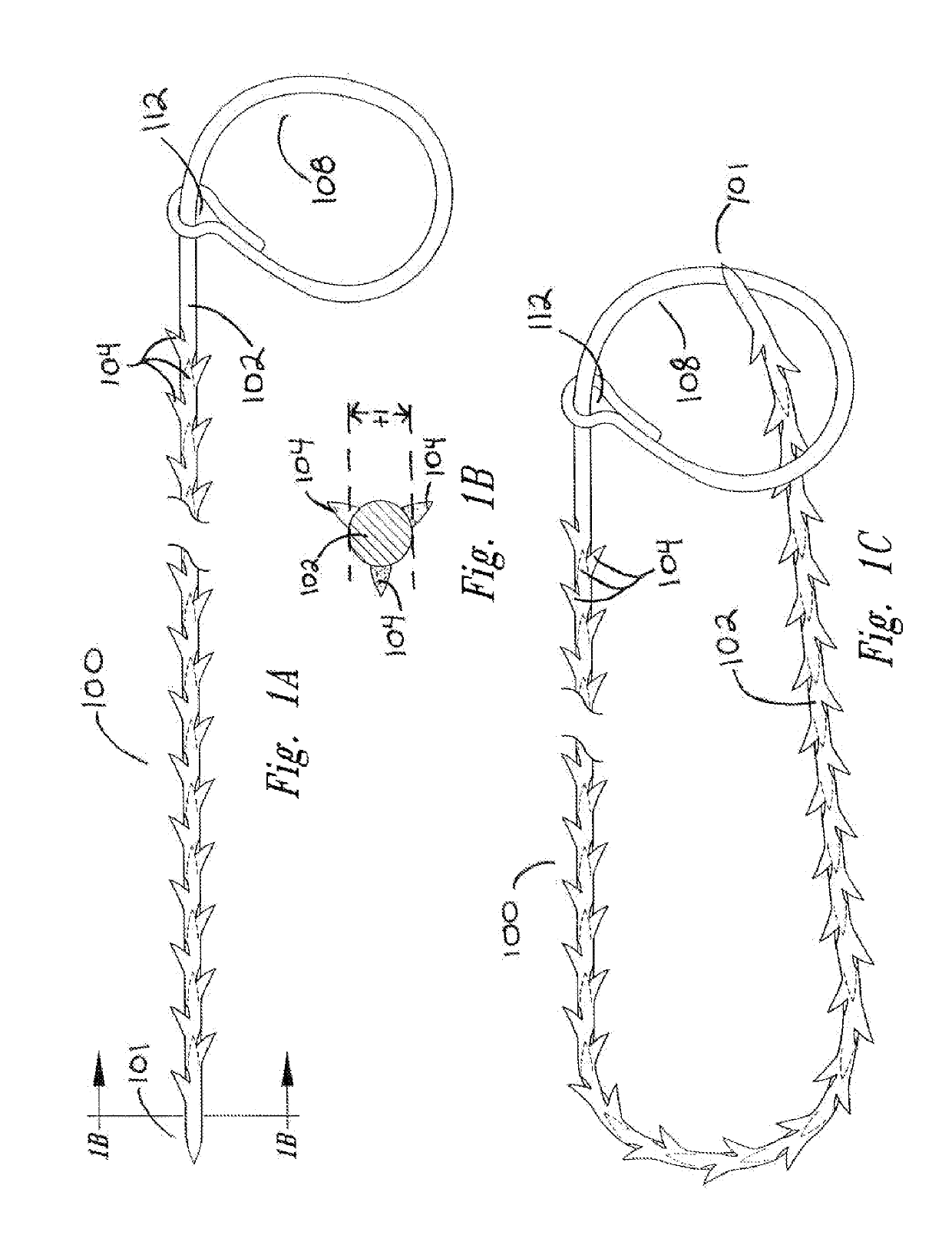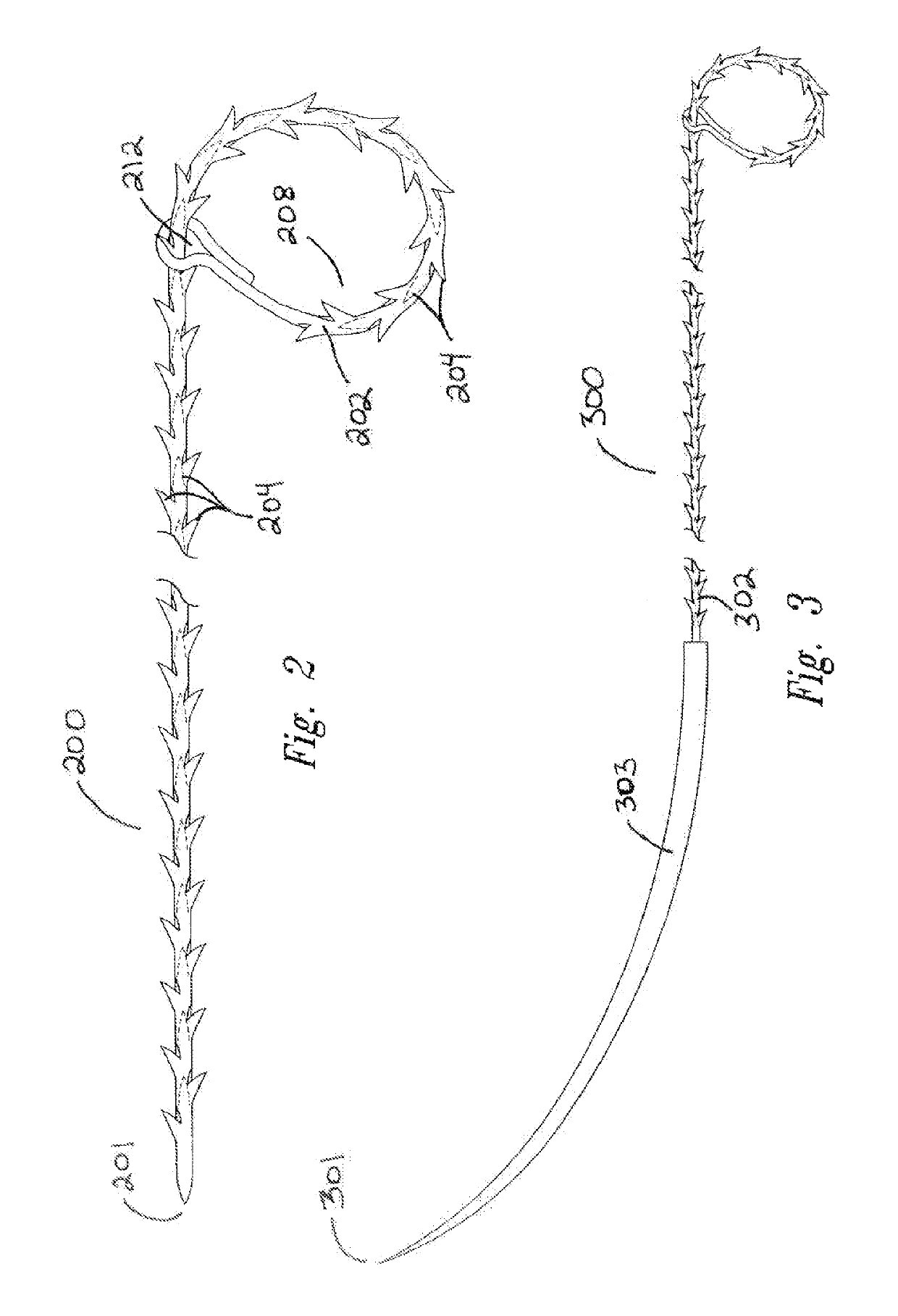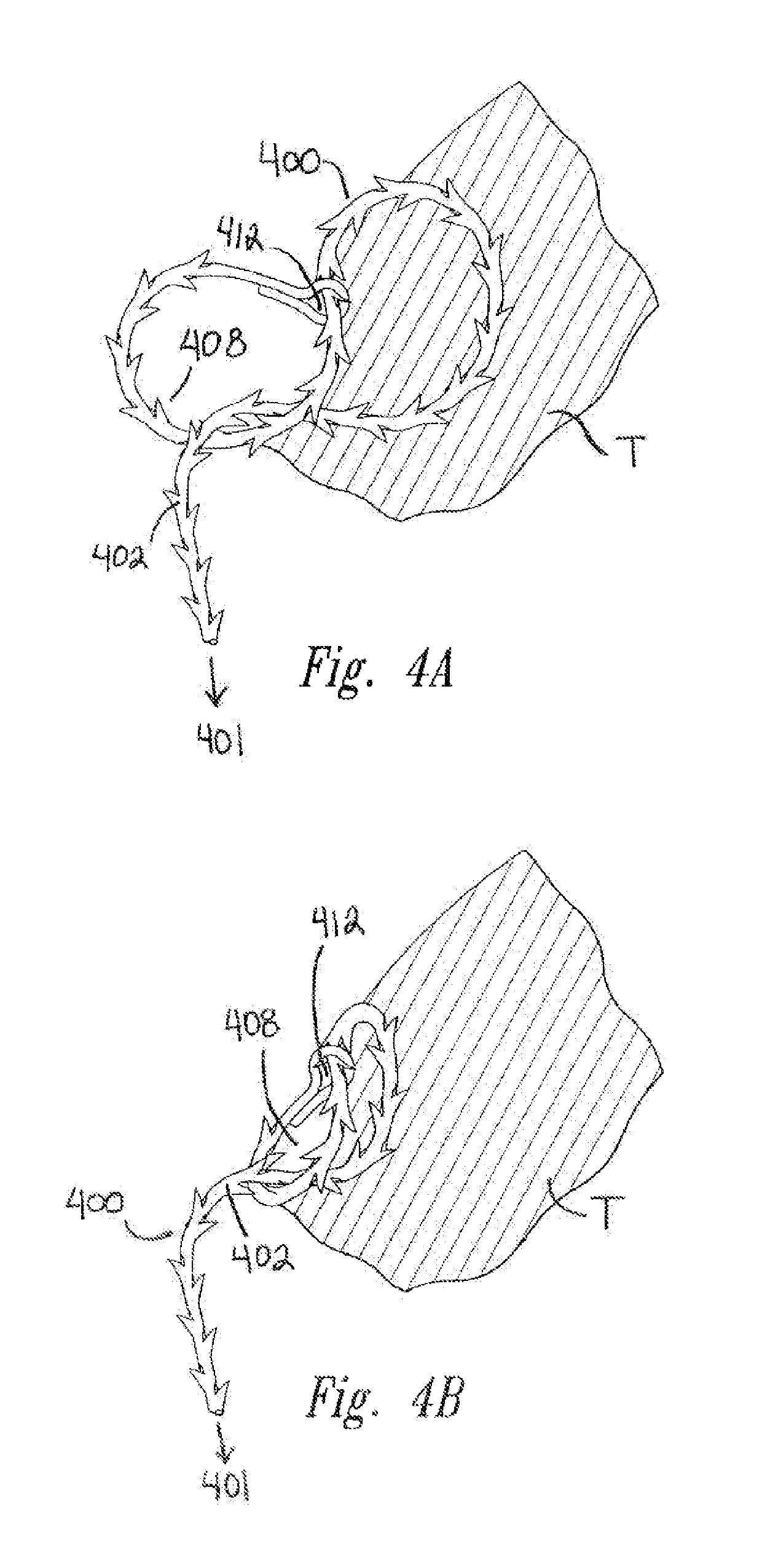Self-retaining variable loop sutures
a self-retaining, variable-loop technology, applied in the field of sutures, can solve the problems of increased risk of dehiscence or rupture at the surgical wound, time-consuming knot tying, and laborious knot tying, so as to achieve effective resistance to tension, enhance the ability to anchor into the surrounding tissue, and effectively prevent movement
- Summary
- Abstract
- Description
- Claims
- Application Information
AI Technical Summary
Benefits of technology
Problems solved by technology
Method used
Image
Examples
Embodiment Construction
Definitions
[0045]Definitions of certain terms that may be used herein include the following.
[0046]“Armed suture” refers to a suture having a suture needle at the suture deployment end.
[0047]“Braided suture” refers to a suture comprising a multifilamentary suture thread. The filaments in such suture threads are typically braided, twisted, or woven together.
[0048]“Degradable (also referred to as “biodegradable” or “bioabsorbable”) suture” refers to a suture which, after introduction into a tissue is broken down and absorbed by the body. Typically, the degradation process is at least partially mediated by, or performed in, a biological system. “Degradation” refers to a chain scission process by which a polymer chain is cleaved into bloomers and monomers. Chain scission may occur through various mechanisms, including, for example, by chemical reaction (e.g., hydrolysis, oxidation / reduction, enzymatic mechanisms or a combination or these) or by a thermal or photolytic process. Polymer de...
PUM
 Login to View More
Login to View More Abstract
Description
Claims
Application Information
 Login to View More
Login to View More - R&D
- Intellectual Property
- Life Sciences
- Materials
- Tech Scout
- Unparalleled Data Quality
- Higher Quality Content
- 60% Fewer Hallucinations
Browse by: Latest US Patents, China's latest patents, Technical Efficacy Thesaurus, Application Domain, Technology Topic, Popular Technical Reports.
© 2025 PatSnap. All rights reserved.Legal|Privacy policy|Modern Slavery Act Transparency Statement|Sitemap|About US| Contact US: help@patsnap.com



